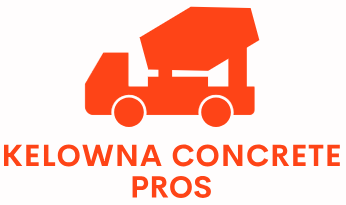Kelowna Concrete Pros
Kelowna Concrete Flatwork
What Is Concrete Flatwork?
All across Canada, you will find many types of flat pavements. These include parking lots,
pool decks, sidewalks, dumpster pads, courtyards, and streets. In simple terms, flatwork is the installation of concrete on a flat or almost flat surface. The primary goal of concrete flatwork is to produce functional, long-lasting, and visually pleasing surfaces that adhere to specific project requirements. It serves as the canvas upon which the rest of the building or structure is built, and the quality of the flatwork plays a crucial role in the longevity and aesthetic appeal of the final product. Industrial-grade flatwork can withstand ~6,000 PSI of force. This strength evolves from the flatwork’s structural components. Pouring the concrete mix over a steel-reinforcing bar (rebar) increases the slab’s tensile strength to last 20–30 years. When installed by the professionals at
Kelowna Concrete Pros, this durable concrete can resist potholes in parking lots and avoid cracking under the weight of heavy production lines.
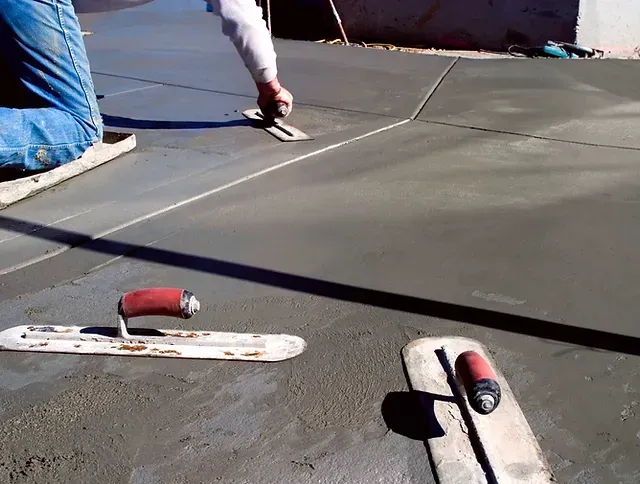
Get Instant Quote
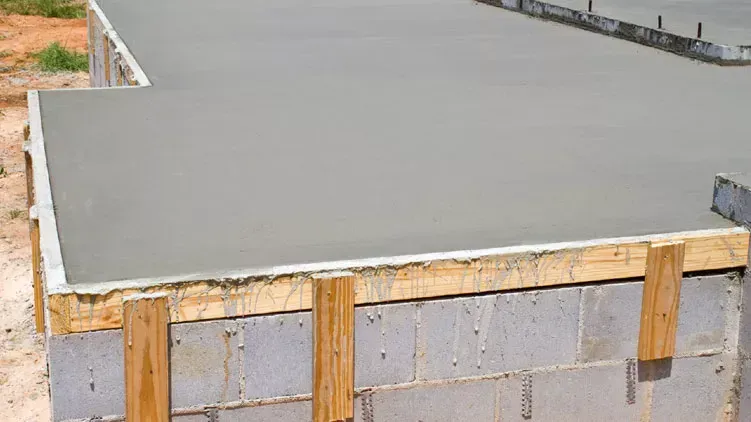
Different Types of Concrete Finishes for Flatwork?
In addition to there being multiple types of concrete paving, there is also a wide range of concrete flatwork finish options, allowing for customization and design versatility. Common flatwork finishes include:
Broom Finish: This finish is achieved by dragging a broom over the surface of the concrete while it's still curing. It creates a textured, slip-resistant surface, making it suitable for outdoor applications like sidewalks and driveways.
Stamped Concrete: Stamped concrete involves pressing patterns or textures into the surface before it dries, simulating the look of materials like brick, stone, or wood. It's popular for patios, pool decks, and decorative applications.
Exposed Aggregate: In this finish, the top layer of the concrete is removed to reveal the aggregate (small stones and pebbles) underneath. It provides a unique and textured appearance, often used for pathways and decorative surfaces.
Polished Finish: Polished concrete involves grinding and polishing the surface to create a smooth, glossy, and reflective finish. It's commonly used in commercial and industrial spaces.
Stained Concrete: Staining involves applying acid-based or water-based stains to the concrete surface, which can achieve a wide range of colors and designs. It's often used for interior floors and decorative elements.
Driveways
A concrete driveway is a type of paved surface, which is typically composed of cement, aggregate materials, and water. The mixture is then poured onto a prepared base material before it’s allowed to set and harden over time. Installing a concrete driveway requires the professional expertise of experienced contractors like Kelowna Concrete Pros.
Unless you are building your own home, or looking at a concrete driveway diy job, typically when someone searches for concrete driveway cost they are looking at redoing their driveway or repairing it. Sometimes the builder didn’t do a good job and add enough rebar, or it’s possible that the weather wasn’t conducive when the concrete was initially poured and it didn’t get enough time to set up. Whatever the case, we handle new driveways and any type of repair imaginable.
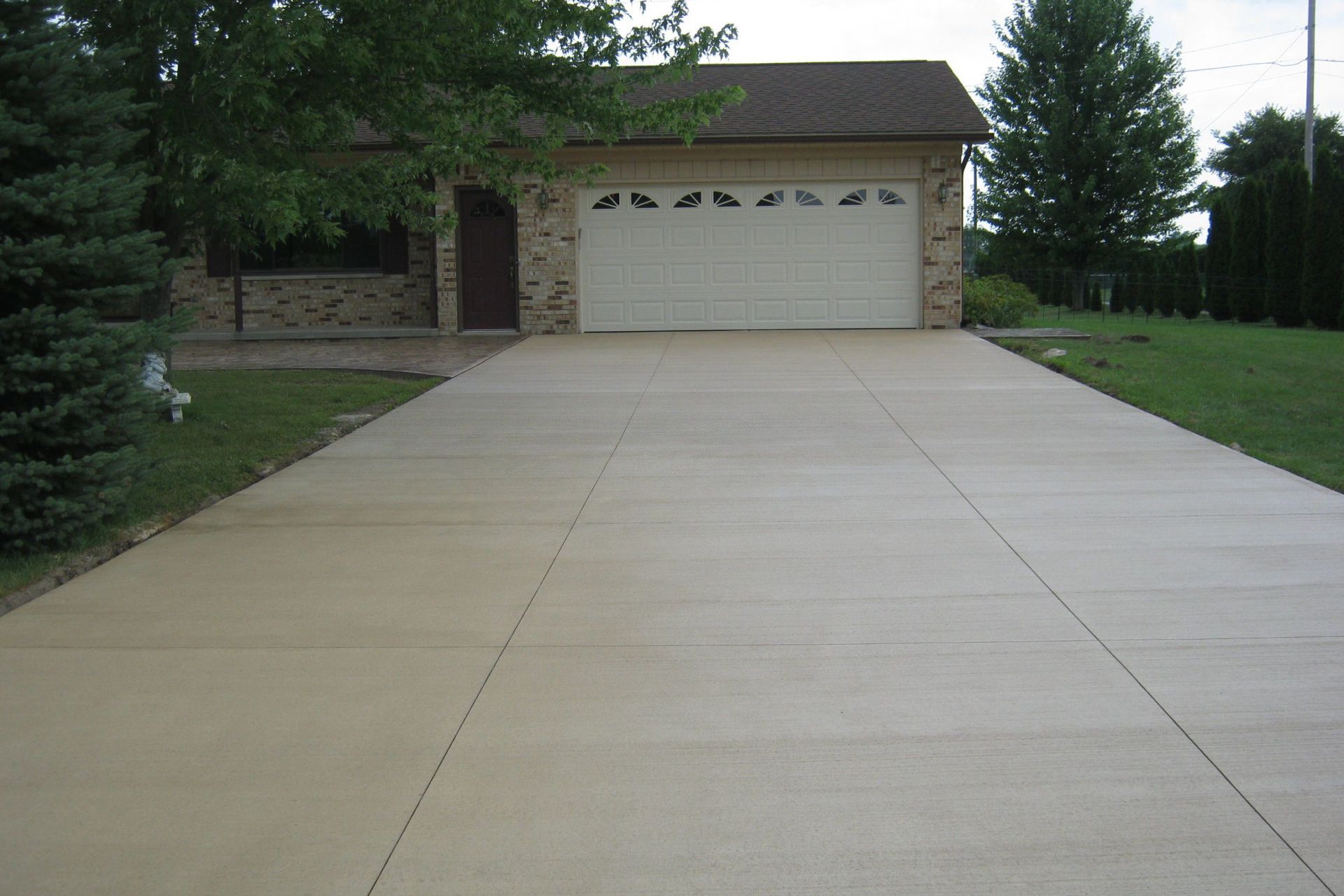
Walkways & Sidewalks
If you are looking for a cement walkway or sidewalk to go around the house, you’re probably wondering what the sidewalk cost per square yard is going to be. During our free estimate we can and will give you the concrete sidewalk cost, which we will stay true to even if we run into some hiccups during our installation process.
Patios
A
concrete patio is a paved outdoor area and is a great addition to any home. It can provide extra space for entertaining, relaxing, or simply enjoying the outdoors. Concrete patios are also durable and easy to maintain, making them a popular choice for many homeowners. They can be plain or ornate, stamped and they can be customized to suit your needs.
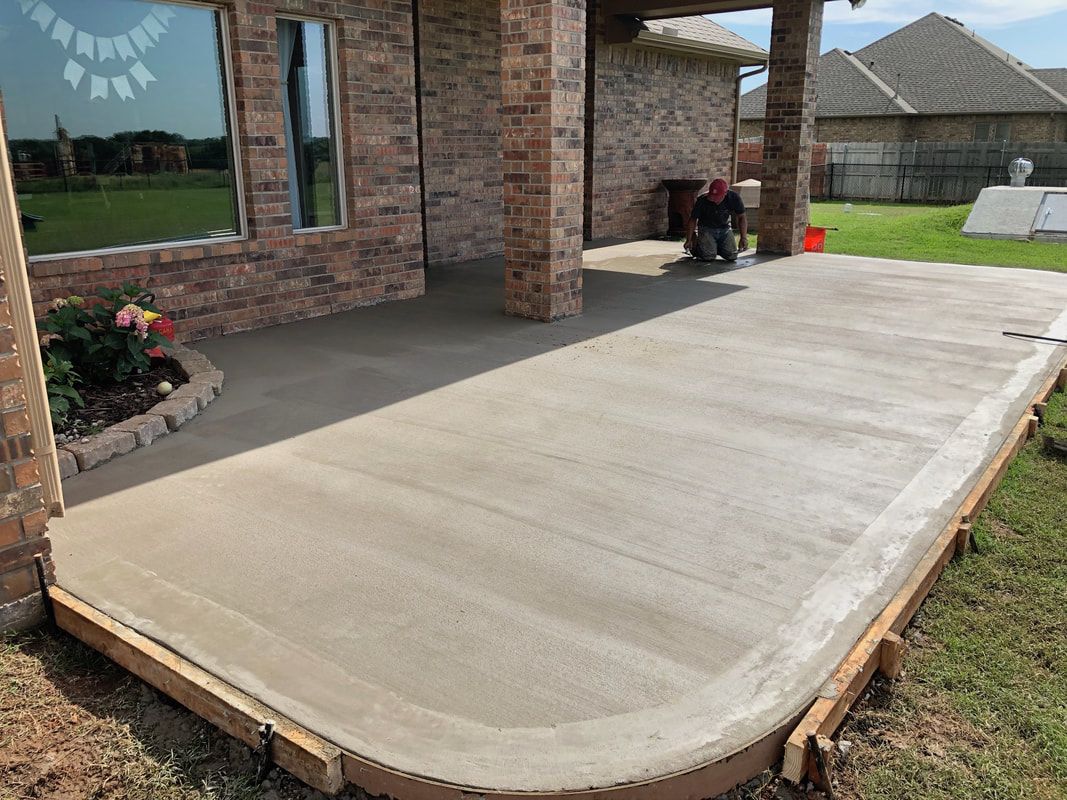
What is the Importance of Curing in Concrete Flatwork?
Curing is a critical aspect of the concrete paving process, which significantly impacts the strength, durability, and overall quality of the finished surface. When concrete cures, it undergoes a hydration process where water combines with the cement to form a strong crystalline structure. Curing involves maintaining adequate moisture levels during this crucial period.
Firstly, curing enhances the strength of the concrete. It allows the concrete to reach its maximum potential in terms of durability and longevity, ensuring that it can withstand the loads and stresses it will experience throughout its lifespan.
Secondly, it minimizes cracking. By maintaining the right moisture levels, you can prevent or reduce the development of cracks on the surface. Cracks can compromise the aesthetics and structural integrity of the concrete, which is especially important for projects where appearance matters, such as decorative concrete.
Furthermore, curing reduces shrinkage. During the natural curing process, concrete shrinks as it hardens. If not properly cured, this shrinkage can lead to surface imperfections and cracks. Proper curing helps mitigate this issue.
One last point about curing is that it improves durability. A well-cured concrete surface is more resistant to wear and tear, chemical damage, and the effects of environmental factors, and can maintain its integrity and appearance over time, even in challenging conditions. To achieve effective curing, methods such as keeping the surface moist, using curing compounds, and covering the concrete with wet burlap or plastic sheets are commonly used. It's essential to follow curing guidelines to ensure the concrete reaches its full potential and performs as expected.
Installation
Installation of commercial or residential concrete should not be done by everyone, but only by a professional, that has the right equipment and capacity to do it. We understand and know what our customers want and will deliver it as quickly as we can. You may think that calling someone to pour cement will do the job, but it will probably just end up hurting your exterior. Once the site preparation is complete your cement will be poured, and our experts will make sure that the wet concrete is leveled and finished in the correct way to create a stable base. Call Kelowna Concrete Pros for your next project in Kelowna, West Kelowna and throughout most of the Okanagan Valley.
For anyone who wants DIY concrete information, we have a step by step guide right
HERE.
What Are the Benefits of Concrete Flatwork?
Certain types of concrete have been used for centuries to construct roads, buildings, docks, and other structures. The Romans were early adopters of concrete, using their version to construct bridges, roads, monuments, cisterns, walls, and large buildings, many of which are still standing. Although Roman concrete is not identical to modern concrete, the extant structures testify to the potential longevity of the material if installed by experienced, thoughtful contractors. In addition to its durability, a concrete flatwork company can finished to be decorative or perfectly smooth, and it needs little in the way of routine maintenance.
What Are the Steps for Concrete Flatwork?
Proper site preparation is crucial. Any subterranean drainage issues should be addressed, and the site should be cleared of any existing pavement, vegetation, and debris. If necessary, the site will be graded to ensure an even, flat surface, and an aggregate subbase or rebar may be installed for certain projects. The next step is to section off the area and construct wooden frames. The concrete is then poured and finished. When the concrete is sufficiently cured, the frames will be removed.
What Can Damage Concrete Flatwork?
A leading cause of damage to concrete sidewalks is nearby vegetation, specifically tree roots. Some types of trees grow large, extensive networks of roots that tend to expand out rather than down. These roots can be powerful enough to lift concrete slabs from below, or they can exert sufficient pressure on the side of the pavement to force slabs out of position. Another leading cause of damage is abuse, including vehicles driving on concrete pavements that were only supposed to bear pedestrians, bicycles, golf carts, or other lightweight traffic. Potentially, drainage issues and unstable soils can inflict damage. If water manages to find its way underneath the pavement, freezing temperatures can result in uplifts from the expanding ice. Unstable soils, especially those with a great deal of clay, can react to dry and wet conditions by contracting and expanding, possibly causing uplifts or subsidence.
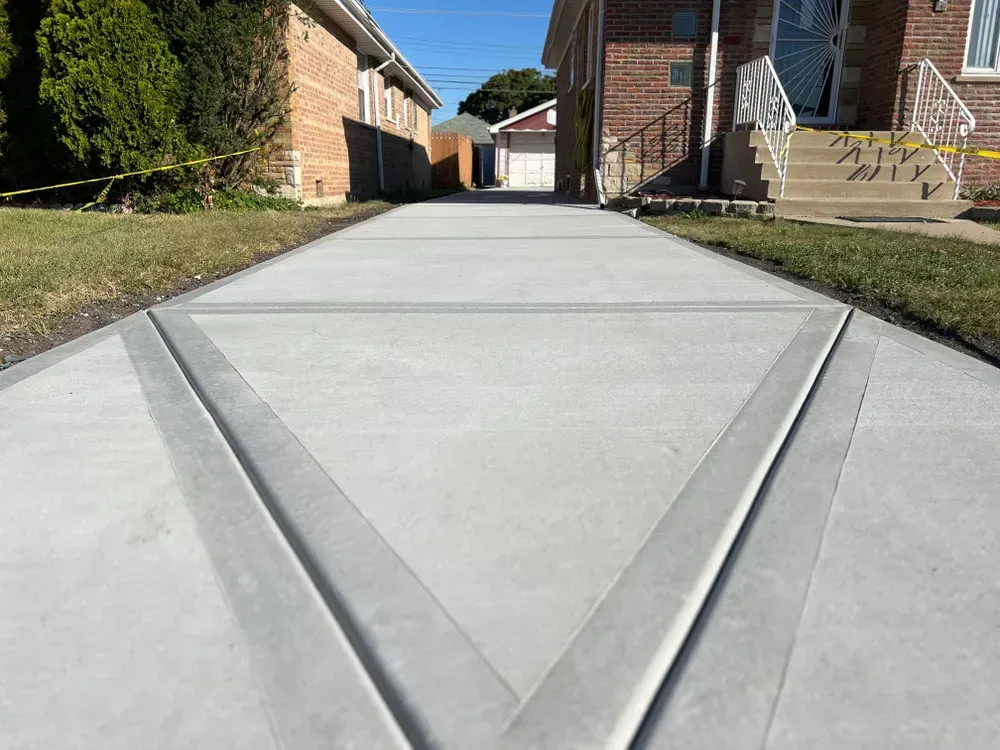
More About Concrete Flatwork:
Kelowna Concrete Pros is a highly experienced concrete and paving company with an impeccable reputation. In addition to concrete flatwork, we offer asphalt paving, parking lot striping, concrete curbing, asphalt repairs, pavement markings, asphalt crack sealing, sewer repairs, asphalt milling, site grading and excavation, asphalt sealcoating, car stops, asphalt fabric, traffic signage and many more verities of concrete work. We are known for our attention to detail, our exceptional craftsmanship, and our unmatched customer service. If you want us to get started on your free quote, contact us by completing the online form. To discuss your project in more detail, give us a call any time.
What is concrete flatwork?
Concrete flatwork is a broad term for concrete applications that are flat or horizontal. Concrete paving, on the other hand, is typically used for surfaces where vehicles will travel, such as driveways, parking lots, and roadways.
How long does it take to calculate the volume of concrete?
To calculate the volume of concrete, you can use the formula length times width times height (L x W x H)
How long do I have to wait to Iwalk on new concrete?
You can usually walk on new concrete after 24 hours, but you should wait longer if it has rained a lot or if it's stamped concrete
How can you prevent concrete cracking?
To prevent concrete cracking, we can use proper control, isolation, and construction joints
How can you protect concrete from freezing?
Here are some of the methods we use to help counter the effects of freezing temperatures:
Add additional cement to the mix
Add hot water instead of cold
Heat the aggregates in the mix
Add a chemical accelerator, such as calcium chloride or a non-chloride admixture
Use a water-reducer to reduce bleed water
What is the difference between cement and concrete?
Cement is the binding agent in concrete, while concrete is the hardened mixture of aggregates and paste.
How long does concrete last?
The lifespan of concrete depends on how it's used. Concrete gets stronger over time through a chemical process called hydration
How thick will my concrete be?
In most cases, residential concrete including patios, sidewalks, garages, driveways, and carports are 4″ to 6″ thick. However, if you plan to drive on or park RV’s, or commercial trucks or place larger, heavier items such as a hot tub then we’d recommend you go with at least a 6” slab.
